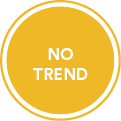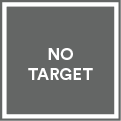- Healthy Human Population
- Local Foods
- Indicator
- Bivalve harvest for personal use
- Vital Sign Indicator
- Each Unit (count)
- /
-


No targets are currently set for this indicator.
-
Camille Speck
- Contributing Partners
- Last Updated
- 1/3/2024 11:40:12 AM
This indicator tracks noncommercial bivalve harvest through an estimate of the number of people harvesting clams or oysters for personal use each year at a portion of public beaches in Puget Sound. Personal use is defined here to include harvest for recreation, food security, cultural and family heritage, as well as other personal and emotional experiences. The ability to harvest shellfish depends on the health of the resource, water quality, and access to publicly owned shellfish beds.
Number of people harvesting bivalves (clams or oysters) for personal use each year at 34 public beaches across three Puget Sound regions: North Sound and Admiralty Inlet (12 beaches), Hood Canal (15 beaches), and Central and South Puget Sound (7 beaches).
There is a long-standing tradition of harvesting clams and oysters along the beaches of Puget Sound. The ability to collect local resources for ceremonial, subsistence, and recreation adds to the health and quality of life of Puget Sound residents. The act of collecting, preparing and sharing such foods maintains cultural knowledge and practices and often builds social relationships. Tribal subsistence and ceremonial use occurred for millennia and are still important today.
Harvesting clams and oysters is a more widely accessible practice compared to many other fishing and shellfishing opportunities. The annual license is relatively inexpensive, a boat or other expensive gear is not required, and there are year-round harvesting opportunities throughout Puget Sound. Therefore, this fishery provides access to local foods without the common economic barriers.
This indicator reports on Washington Department of Fish and Wildlife (WDFW) estimates of clam and oyster harvest for personal use. Maintaining a record of harvester effort on beaches across the Puget Sound region is fundamental to support the co-management of the resource by WDFW and Washington Tribes. Effort estimates for each beach under active co-management are needed to determine how much harvest occurred in a given year. This information is compared to the amount of allowed harvest each year and is used to adjust the season the following year as needed to conserve the resource.
- The number of people harvesting clams and oysters for personal use at surveyed public beaches in Puget Sound varies year to year. Between 1990 and 2023 the highest number of harvesters was observed in 2009 and 2016 (nearly 137,000 people both years) and the lowest in 2007 (about 64,000 people).
- Most people harvest shellfish at beaches in the Hood Canal or North Sound and Admiralty Inlet regions.
- Many beaches in Central and South Sound experience sustained levels of pollution. Fewer beaches are open to harvest in this region, particularly along the highly populated shoreline between Tacoma and Everett where it is not safe to eat harvested shellfish. Officials often need to shorten the harvest season at the beaches in this region that are open to fishing due to health concerns.
- To ensure that access to shellfishing is relatively stable over time, Washington Department of Fish and Wildlife closely monitor clam and oyster populations and will set harvest limits. That said, resource management is site-specific and the number of harvesters at a given beach will vary year to year depending on the health of the resource, access to the beach, water quality, and timing of low tides.
- Within a region, harvester-days and harvesting seasons vary by beach (see Interpretation of Results and map). Potlatch and Dosewallips State Parks in Hood Canal are two of the most popular shellfish beaches in Puget Sound. Birch Bay State Park in the North Sound is also popular, though subject to frequent biotoxin closures. Penrose Point State Park in the South Sound was closed to harvest in 2023 due to construction and maintenance at the park, but will open again in 2024.
- Port Gamble Tidelands in the Admiralty Inlet region opened for shellfish harvest in 2016. The Department of Ecology and the Port Gamble S’Klallam, Suquamish, and several other tribes, led cleanup efforts at this site to address contamination from a former mill property. The work resulted in a cleaner and healthier bay. Over 5,000 people harvested shellfish at Port Gamble in 2020.
- The Department of Health (DOH) regularly monitor water quality and test shellfish for biotoxins. DOH will close areas when shellfish are not safe to eat. Always check the Washington Shellfish Safety Map for beach closures and advisories on the day you plan to harvest shellfish.
- Monitoring Program
Washington Department of Fish and Wildlife Marine Bivalve Program
- Data Source
Washington Department of Fish and Wildlife estimated clam and oyster harvester-days from aerial surveys
This indicator reports the number of ‘harvester-days’ targeting clams or oysters for personal use each year at 34 public beaches across three Puget Sound regions:
- Central and South Puget Sound (7 beaches)
- Hood Canal (15 beaches)
- North Puget Sound and Admiralty Inlet (12 beaches)
Washington Department of Fish and Wildlife (WDFW) monitors fishing effort on a selection of Puget Sound public beaches every year. WDFW conducts aerial surveys to count the number of harvesters at or near low tide at each beach. Biologists count the people that are actively engaged in noncommercial clam or oyster harvesting and those clearly equipped to do so during the aerial surveys. Flying at 500 ft., it is possible to differentiate between a harvester and a dog, for example, or a commercial harvester and a noncommercial harvester. It is not possible to differentiate between recreational and Treaty subsistence harvesters; therefore, both would be counted in the aerial surveys.
WDFW staff apply statistics and assumptions to extrapolate the counts using known relationships between tide height and harvester behavior to estimate the total number of harvesters over the course of the day. The daily effort estimates are then applied across the number of unobserved tides each year during the open and closed seasons and reported as total annual effort (total harvester-days).
The detailed methodology on estimating recreational clam and oyster harvest in Puget Sound can be found here: https://wdfw.wa.gov/publications/00944.
- Critical Definitions
“Harvester-day” is a unit of noncommercial shellfishing effort equal to one visit (of any length of time) to a public beach by a personal use harvester (does not include people harvesting for ceremonial and subsistence purposes or commercial purposes). However, biologists conducting aerial surveys are not able to differentiate between recreational harvesters and those harvesting for ceremonial and subsistence purposes unless the surveyor received prior notice. Therefore, harvester-day estimates reported for this indicator may include some ceremonial and subsistence harvesters.
Personal use harvest includes harvest for recreation, food security, cultural and family heritage, as well as other personal and emotional experiences.
Several species of clams and Pacific oysters are available for harvest on numerous public beaches and tidelands throughout Puget Sound. This indicator reports the number of bivalve ‘harvester-days’ each year at 34 public beaches across three Puget Sound regions.
Regional shellfishing effort was highest for Hood Canal in 2020 with an estimated 82,900 harvester-days across the 15 public beaches surveyed. That year, over one-third of the people harvesting in this region were at Potlatch State Park. WDFW also estimated more than 80,000 total harvester-days for the Hood Canal region in 2002.
Regional shellfishing effort was highest for North Sound and Admiralty Inlet in 2016 with an estimated 61,521 harvester-days across the 12 public beaches surveyed. Since then total harvester-days have declined in the region. Less than 20,000 people harvested at these beaches in 2022; however, that increased to 27,000 people in 2023. Between 2002 and 2008 two of the most popular North Sound shellfish beaches, Birch Bay State Park and West Penn Cove, were closed to harvest. These closures resulted in a large drop in total harvester-days across the region during that time period.
Regional shellfishing effort was highest for Central and South Sound in 1992 (25,763 harvester-days) and 2021 (24,246 harvester-days) across the seven public beaches surveyed. North Bay (Case Inlet) and Penrose Point State Park have both had more than 15,000 harvester-days in a single year, though patterns over time vary. WDFW removed Frye Cove County Park from their aerial survey route in 2022, therefore estimates are not available after 2021. Penrose Point State Park was closed to harvest in 2023 due to construction and maintenance at the park.
-
The Washington Department of Fish Wildlife and tribal co-managers regularly assess the population size of bivalves at each beach under active management and use that information to determine the amount of bivalves that can be harvested sustainably the following year. Washington residents are allocated half of that amount. Using known relationships between catch composition and past effort at each beach, a beach-specific season length is set for the following year in order to achieve the allowable harvest.
Shellfish managers work to ensure sustainable harvest year after year and therefore, must limit or prohibit harvest when the clam or oyster population size is reduced. However, there are other factors, unrelated to season length, that can reduce harvester-days. Pollution is the most prevalent limit to harvester-days across Puget Sound. Pollution limits the safe harvest of bivalve species in much of South Sound, and in other beaches near urban areas or with poor water quality for other reasons. Stormwater runoff, wastewater treatment plant outfalls, failing onsite septic systems, and poor manure management practices on farmlands may all contribute to water quality problems in Puget Sound.
Marine biotoxin closures can also limit the available number of days open to safe harvest. Marine biotoxins, or “blooms”, are difficult to predict and are caused by naturally occurring species of plankton which produce toxin. These blooms are commonly referred to as harmful algal blooms or “HABs” because of their potential to cause illness.
Pollution Identification and Correction programs, improved agricultural practices, and septic system operation and maintenance programs can be effective strategies for improving water quality and restoring or re-opening shellfish beds. See the Puget Sound Innovation Stories for examples of shellfish protection and recovery around the region.
Changes in upland access to a public beach will also impact harvester-days. The addition of safe parking, paths or trails to the beach, and public facilities improve the accessibility of a site and enable more harvesters.
No datasets uploaded.
- Reporting Instructions
| Name | |
|---|---|
| Puget Sound Region |
Central & South Sound, Hood Canal, North Sound & Admiralty Inlet
|